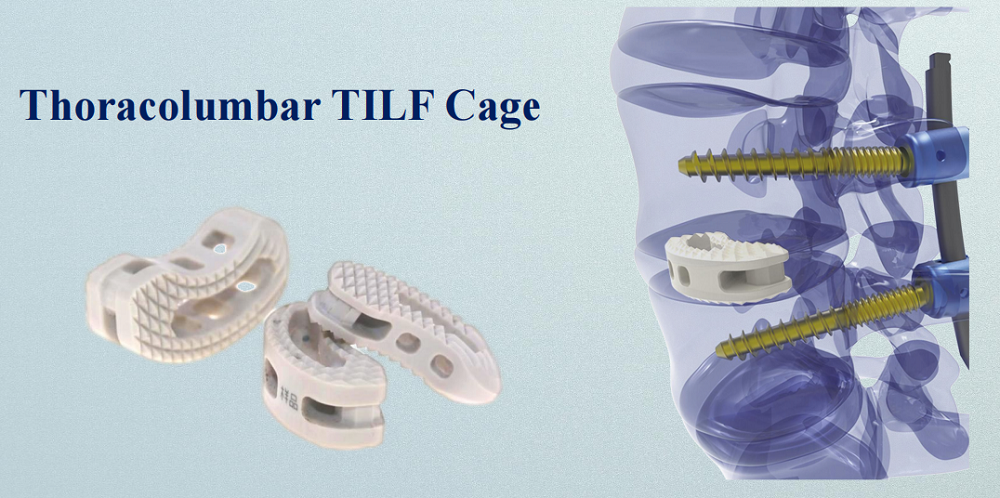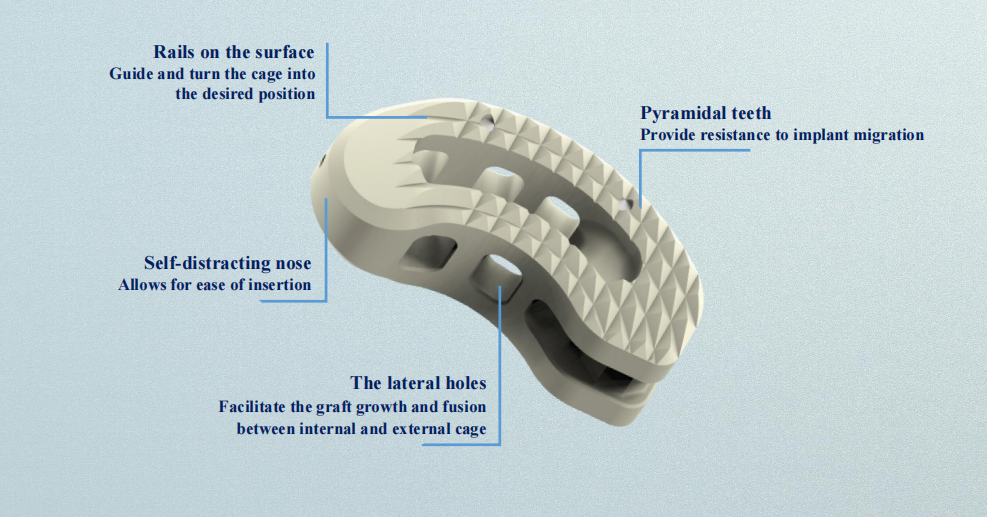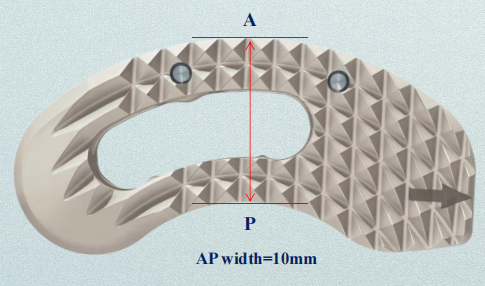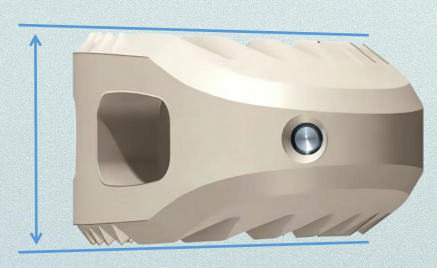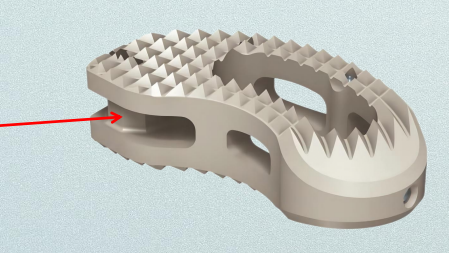The Thoracolumbar TILF Cage is indicated for segmental spondylodesis caused by lumbar and lubosacral pathologies
Tlif peek cage Indications:
Degenerative disc diseases and spinal instabilities
Revision procedures for post-discectomy syndrome
Pseudarthrosis or failed spondylodesis
Degenerative spondylolisthesis
Isthmic spondylolisthesis
Contraindications:
Vertebral body fractures
Spinal tumours
Major spinal instabilities
Primary spinal deformities
Osteoporosis
Cages cervical spinal implants Surgical Technique
It is applicable to TLIF of MIS TLIF surgery
Cervical spine cage is placed at the anterior 1 / 3 apophyseal ring of intervertebral space
TLIF cage can also be used for both open and minimally invasive surgery
Spine Cage Introduction
Rails on the surface
Guide and turn the cage into
the desired position
Self-distracting nose
Allows for ease of insertion
The lateral holes
Facilitate the graft growth and fusion
between internal and external cage
Pyramidal teeth
Provide resistance to implant migration
Two anterior radiographic markers
Enable visualization of the anterior implant position
The markers are located approximately 2mm from the anterior edge of the implant
Axial window
Accommodates autogenous bone graft or bone graft substitute to allow fusion to occur through the cage
One proximal radiographic marker pin
Enable visualization of implant tip position while insertion
Lordotic angle
5° to restore the natural spine lordotic curve
Connection cylinder
Permits the pivoting mechanism in combination with the applicator
Post time: Apr-08-2025

